Explore industrial heritage and innovation in Putuo
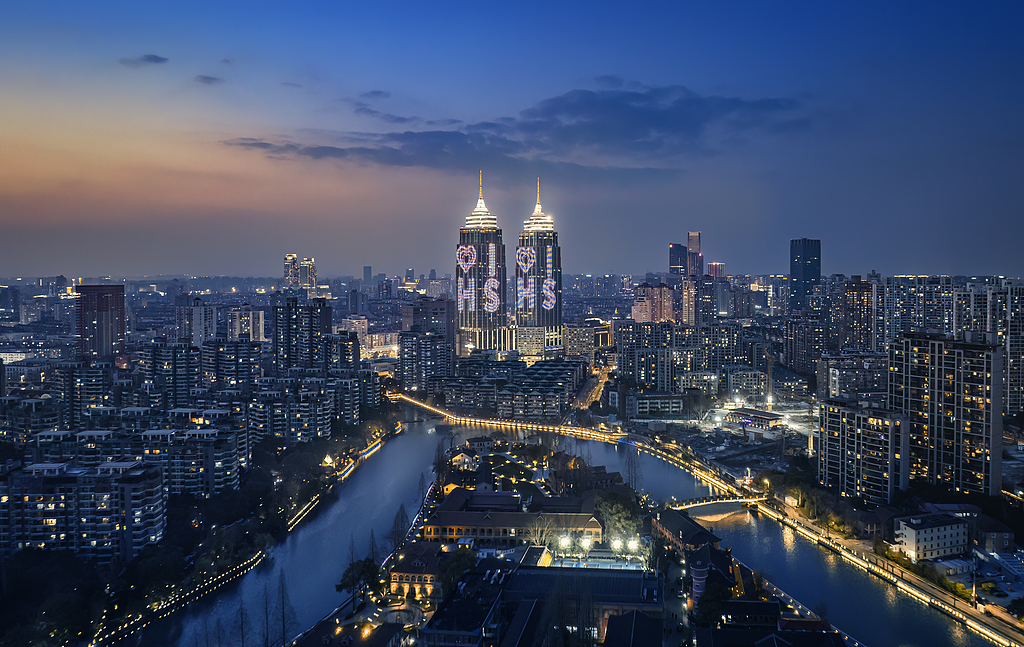
Putuo district, located in northwest Shanghai, spans 55.53 square kilometers. It serves as a crucial land gateway and transportation hub linking Shanghai with the rest part of the Yangtze River Delta.
Putuo is known for preserving the revolutionary legacy of "Red West Shanghai", a key center for labor movements in the 1920s and '30s.
At the end of the 19th century, Chinese and foreign merchants capitalized on the convenient water transport along the Wusong River to establish factories, thus fostering economic development and transforming the area into a renowned old industrial district of Shanghai.
The district boasts the longest Suzhou Creek (nowadays Shanghai section of Wusong River) shoreline in Shanghai's central urban area, rich with waterfront resources. The shoreline within Putuo stretches nearly 21 km, equivalent to the length of a half marathon, earning the Suzhou Creek section in Putuo a new moniker — Banma Suhe (literally "half marathon Suzhou Creek").
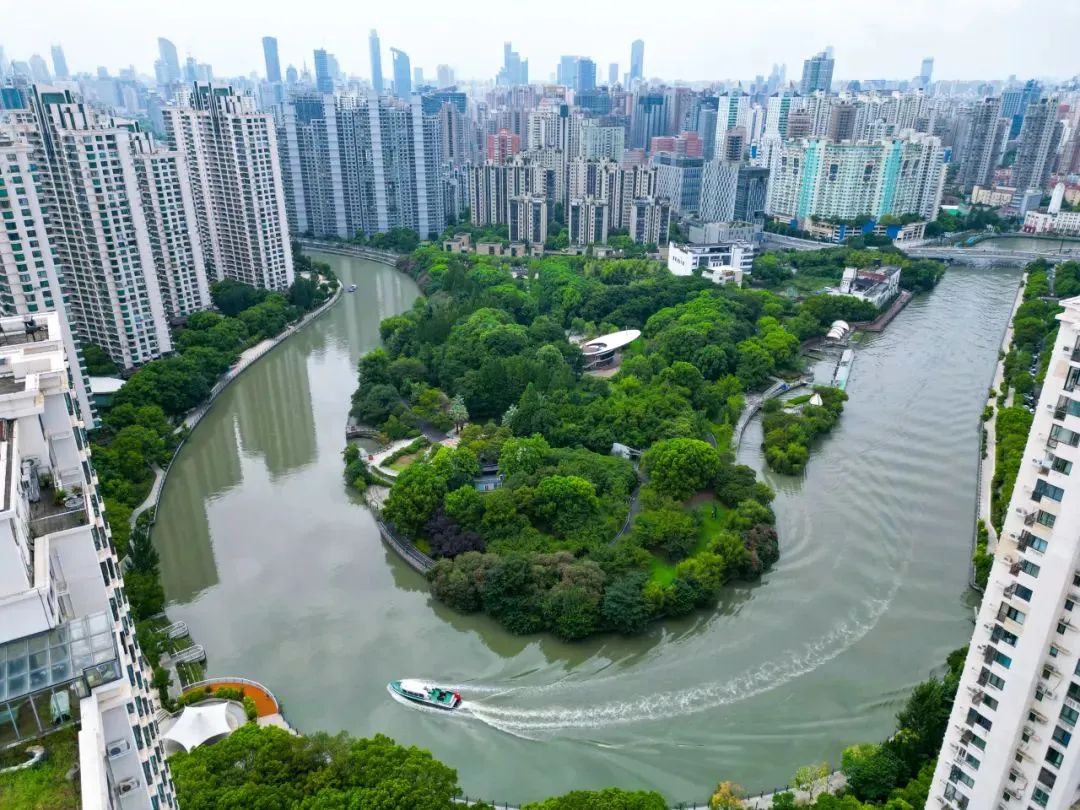
Putuo also features the most river bends along the Suzhou Creek. The 21-km meandering riverbank is adorned with 18 natural bends, like a string of pearls connecting a series of industrial sites, art spaces, and natural landscapes.
From vibrant workers' movements to thriving creative industries, from the heavy machinery sounds to the inspirational clashes in art spaces, from former garbage hills to today's ecological park, Putuo perfectly illustrates the harmonious coexistence of urban renewal and cultural heritage.
This in-depth tour will take you through Putuo's past and present, uncovering the cultural tapestry woven into its streets and alleys — a blend of history, innovation, nature, and art.
Part 1: Glorious industrial memories
1. Shanghai Textile Museum
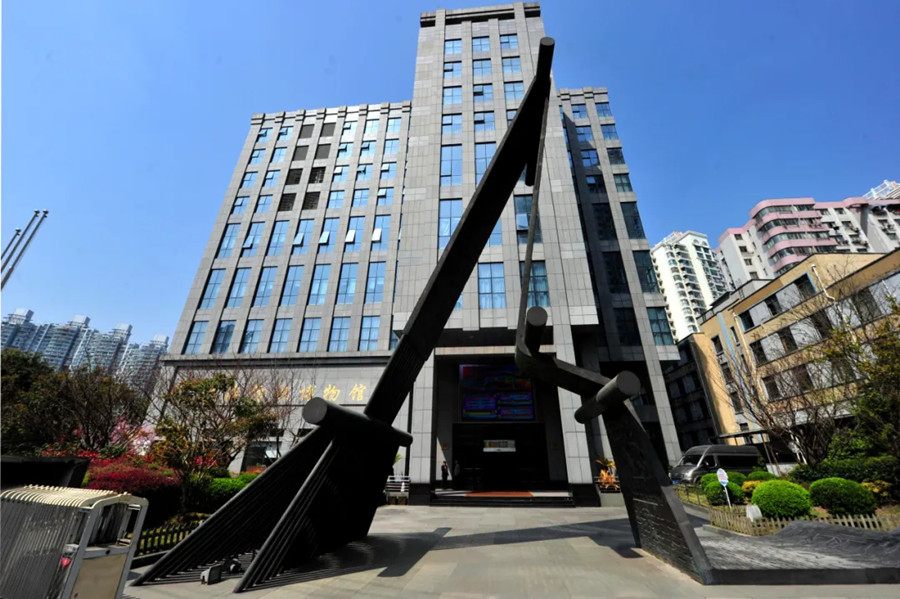
Located at the former site of Shenxin Textile No 9 Factory, the museum features an outdoor exhibition area of 1,500 square meters and an indoor exhibition area of 4,480 sq m.
Through artifacts, documents, images, and models, the museum presents the historical context of textile industry development in Shanghai, highlighting the achievements of the working class.
Exhibits span from bone needles of the Paleolithic era to modern astronaut training suits, showcasing over 6,000 years of textile industry history and culture in Shanghai.
Address: No 150 Aomen Road
2. Shanghai Mint Museum
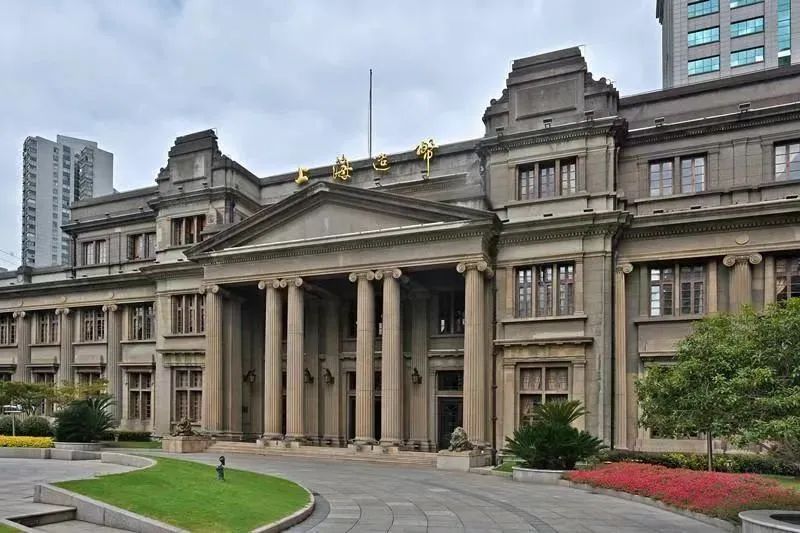
Formerly the Shanghai Central Mint, this site was declared a second batch of excellent historical buildings in Shanghai in 1994.
With an exhibition area of about 700 sq m, the museum displays over a thousand exhibits across three halls, focusing on ancient and modern minting processes, commemorative coins, and the art of coin engraving.
The preserved minting equipment and historical archives allow visitors to understand the development of modern Chinese currency.
Address: No 17 West Guangfu Road
3. Former site of Yichang Road Fire Station
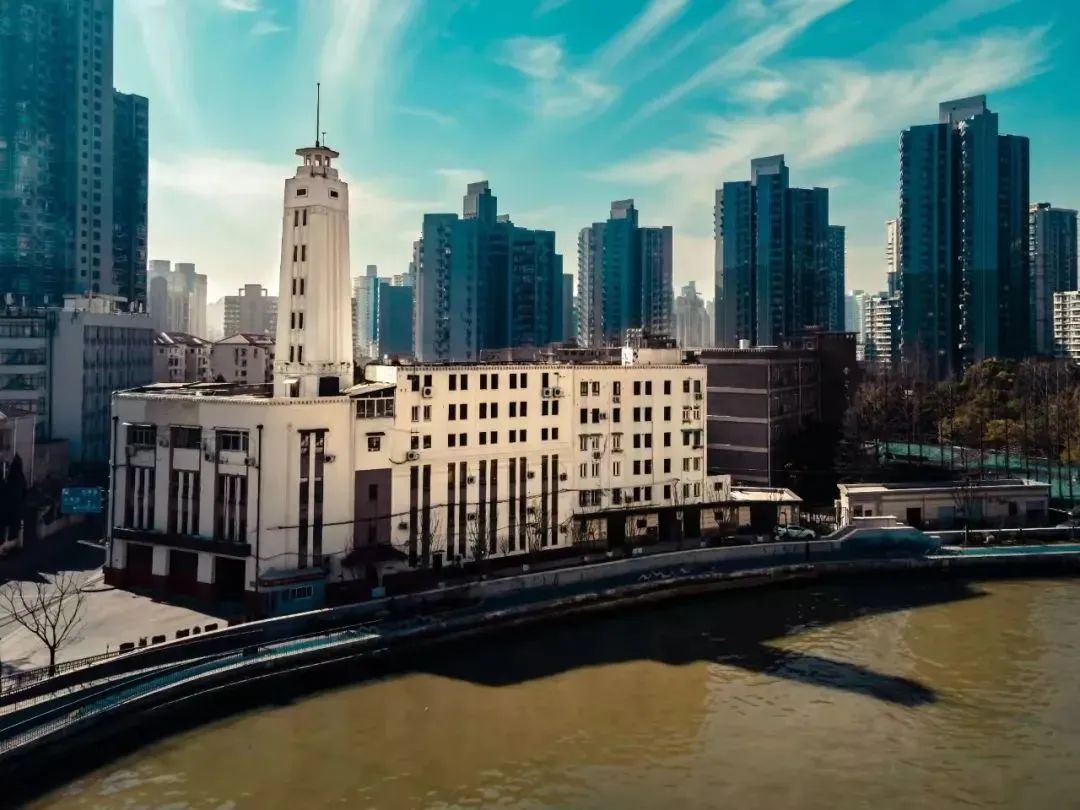
Built in 1932 with Japanese investment, its iconic over 30-meter-high watchtower was the tallest firefighting facility in Shanghai at the time.
The building consists of a four-story structure (later partially extended to six stories) used for offices, accommodation, and garages, along with the fire watchtower, covering about 1,800 sq m with a total building area of 3,130 sq m.
Today, a portion of this building continues to serve its original purpose as a fire rescue station, while its internal museum provides a wealth of historical exhibits through artifacts, documents, and VR technology.
Address: No 216 Yichang Road
4. Suzhou Creek Industrial Civilization Exhibition Hall
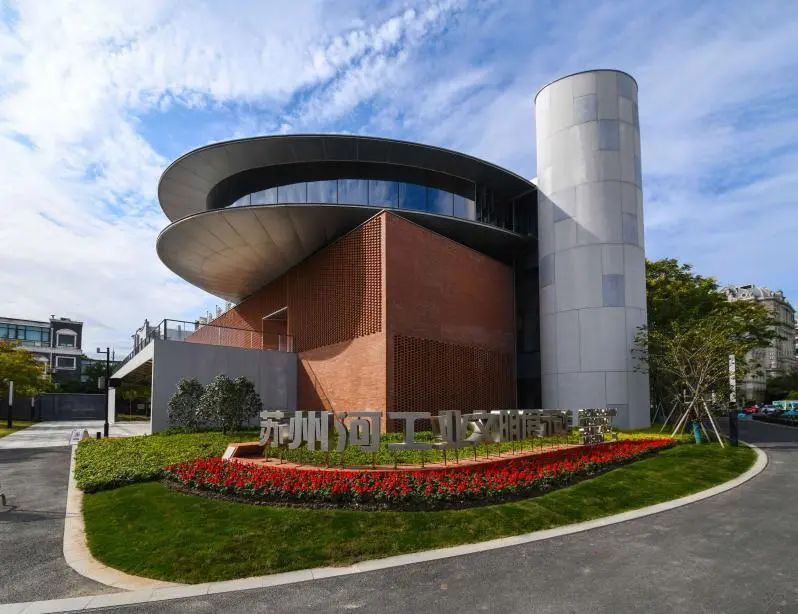
This exhibition hall is located at the former site of Shanghai Glasses No 1 Factory.
Its indoor section showcases the transformation of the Suzhou Creek from a hotbed of modern industry to a livable and innovative land through artifacts, scene recreations, light and shadow interactions, and cultural experiences.
The outdoor area features large industrial machinery, complemented by industrial elements to enhance the industrial cultural atmosphere.
Address: No 2690 West Guangfu Road
Part 2: Industrial art and creative rebirth
1. M50 Creative Park
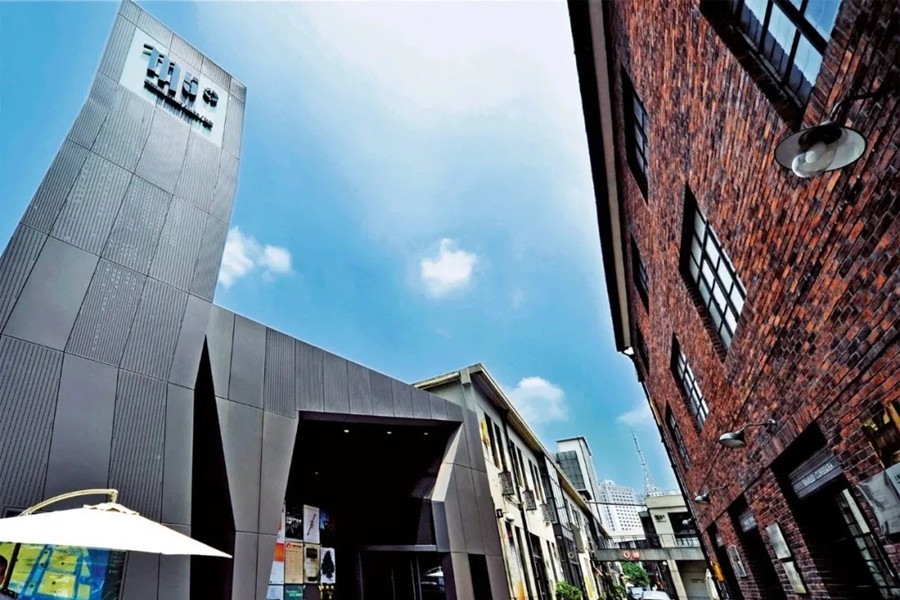
Transformed from a textile factory, M50 Creative Park is the most intact preservation of national textile industrial architecture along the Suzhou Creek, witnessing the development of the modern Shanghai textile industry.
The park retains 43,000 sq m of industrial buildings from the 1930s to '90s, including factories, warehouses, boiler rooms, and canteens.
M50 is one of Shanghai's earliest creative industry clusters, maintaining the industrial style of old factories while integrating modern art elements. It hosts over 140 artist studios, galleries, and other spaces from 20 countries and regions, regularly organizing exhibitions, markets, and art events.
Address: No 50 Moganshan Road
2. Tian An 1000Trees
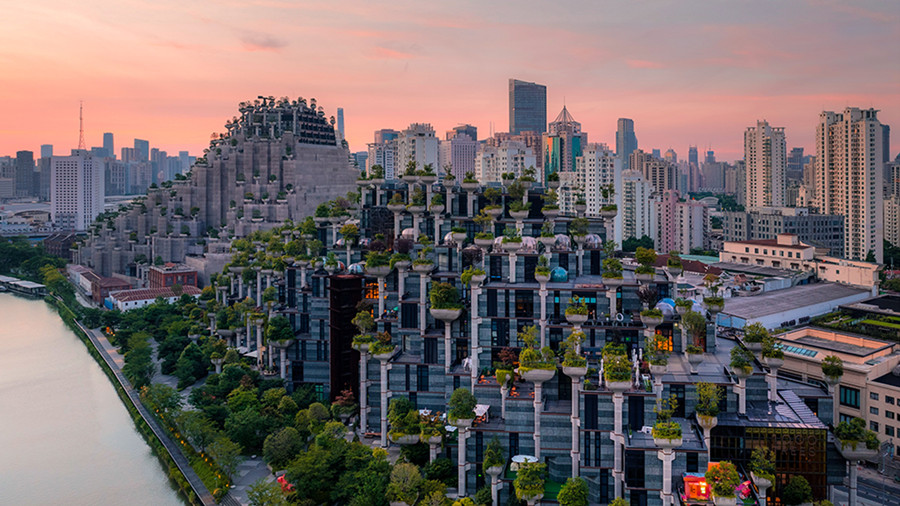
Known as the "Babylon of Shanghai", this architectural marvel is located at the former site of a local flour mill named Fuxin, with four preserved historic buildings for a public space for leisure, shopping, and art.
Over 20,000 plants cover the building's facade, creating a vertical forest-like landscape, with a 900-meter riverside walkway connecting to a public park.
The mall features art installations and regularly hosts trendy exhibitions, making it a futuristic cultural and tourism landmark along the Suzhou Creek.
Address: No 600 Moganshan Road
3. China 1912 Cultural Creative Industry Park
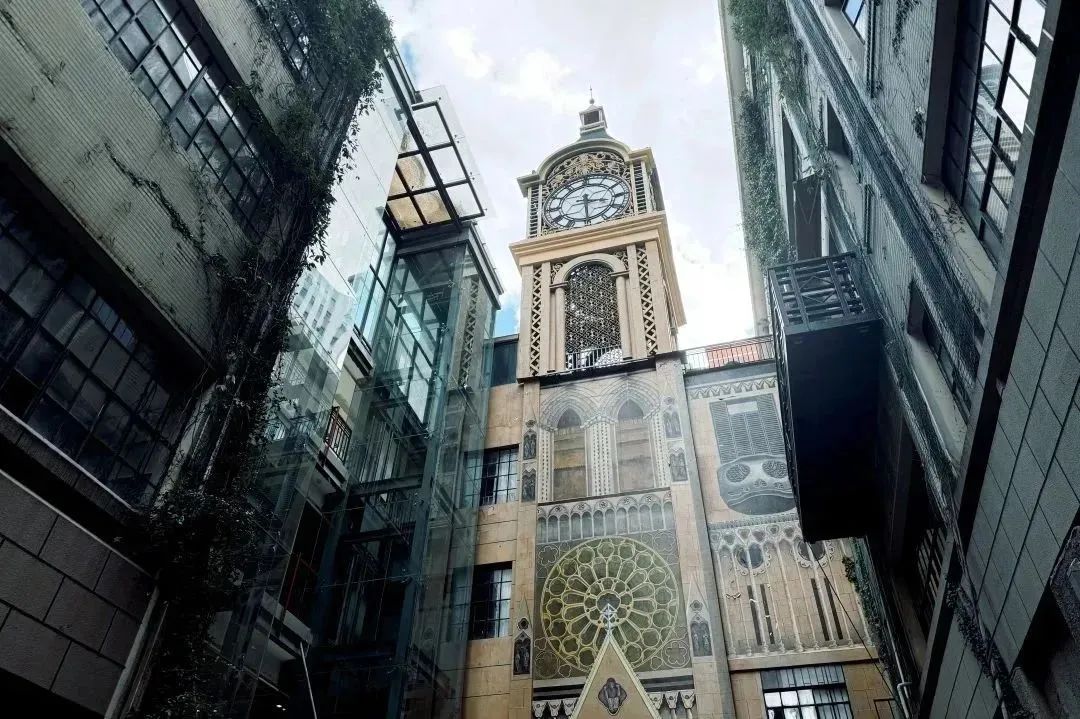
Founded in 1912 by renowned modern educator Lu Feikui, Zhonghua Book Company moved to No 477 Aomen Road in 1935, constructing five four-story buildings and one bungalow, and becoming an important site in publishing and printing history.
Designed and constructed by British merchants, the printing plant adopts a modernist style with a cubic shape and simple facade. In 2009, it was renovated into the China 1912 Cultural Creative Industry Park, offering historical, tourism, and creative industry value.
Address: No 477 Aomen Road
4. The X Tower
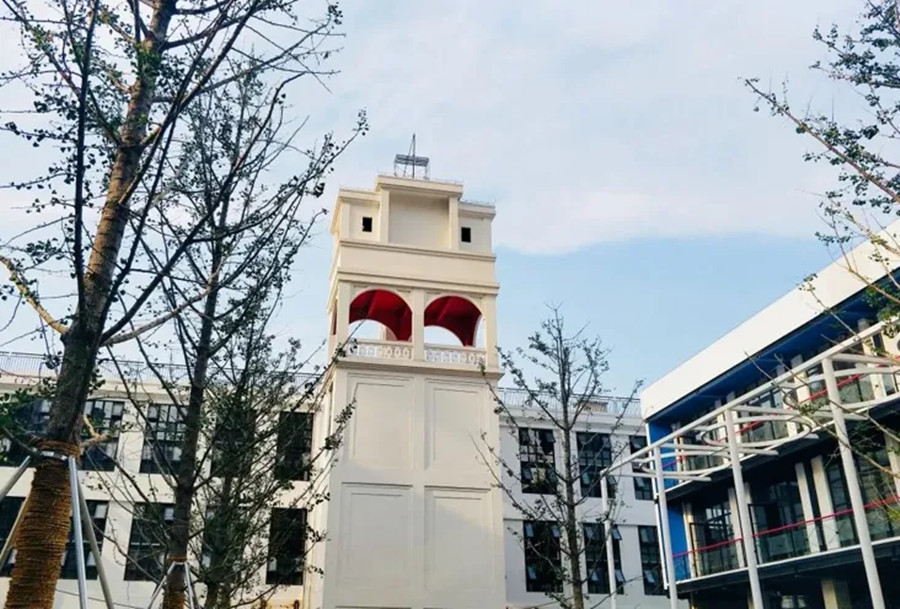
In 1918, national capitalist Liu Bosen founded a cotton mill at No 100 Yejiazai Road. Designed and built by Germans, the factory featured a reinforced concrete frame structure, one of China's earliest modern-style buildings.
The original site retains a three-story warehouse with a lookout tower, now known as The X Tower. It was renovated in 2016 by an Italian designer, creating a minimalist and comfortable space. Today, The X Tower is a shared business community for urban youth, integrating work, life, and entertainment.
Address: No 100 Yejiazai Road
Part 3: The beauty of nature and ecology
1. Environmental Theme Park of Suzhou River Mengqing Garden
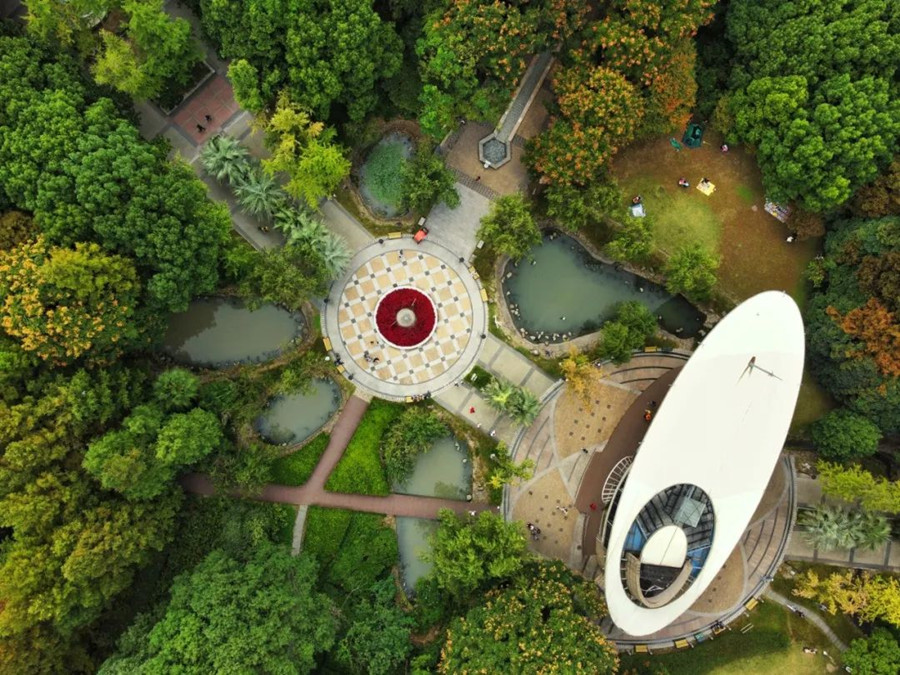
Founded in 1911 by German merchants as Shanghai's first brewery, the site of this park was later acquired and expanded into Shanghai Brewery Co, quickly becoming China's largest beer producer.
The plant, designed by Hungarian architect Laszlo Hudec, covers 11,000 sq m, combining functionality and aesthetics.
In 2002, the brewery site was transformed into the Environmental Theme Park of Suzhou River Mengqing Garden. The Mengqing Pavilion, located in the former bottling workshop of the Shanghai Brewery, has a display area of 3,200 sq m, offering exhibits on Suzhou Creek's geography and water management history.
Address: No 66 Yichang Road
2. Zhenguang Park
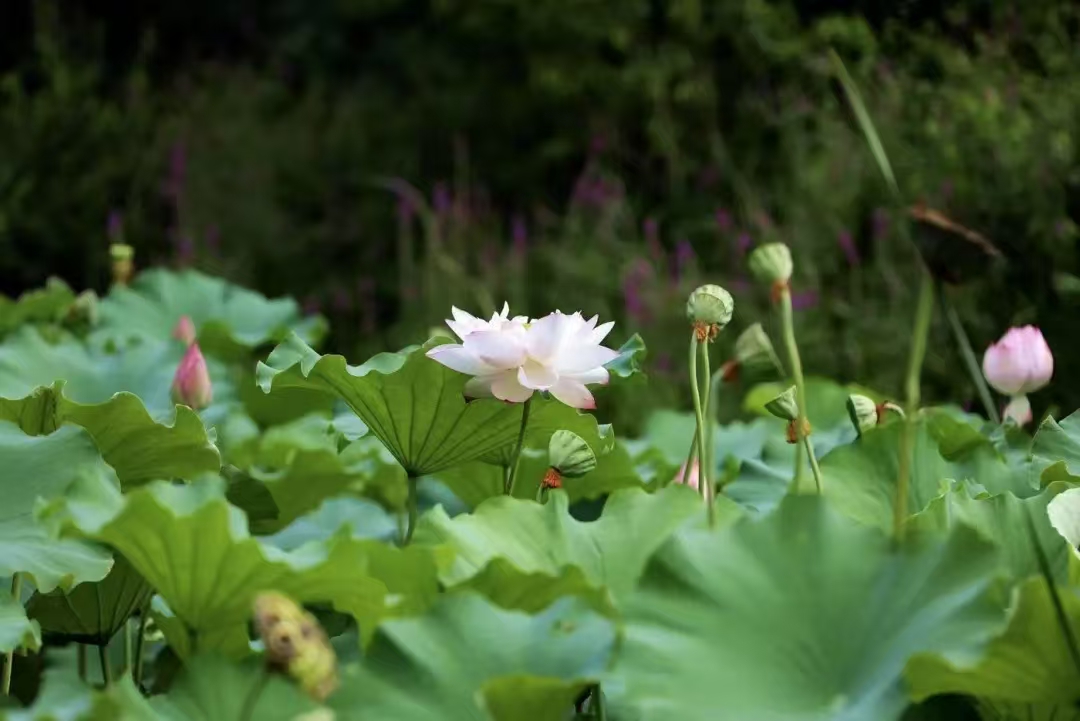
Established in 1999, Zhenguang Park is the city's first urban garden transformed from a garbage hill, making it a key practical project for the Shanghai municipality that year.
Over 20 years later, the park, with 12,000 sq m of green space, is nestled among residential buildings. Its landscaping adopts a natural configuration, with a rich variety of plants, maintaining an appropriate ratio of deciduous and evergreen trees and boasting a greenery rate of 78.8 percent.
Address: No 1865 Zhenguang Road
3. Caoyang Centennial Park
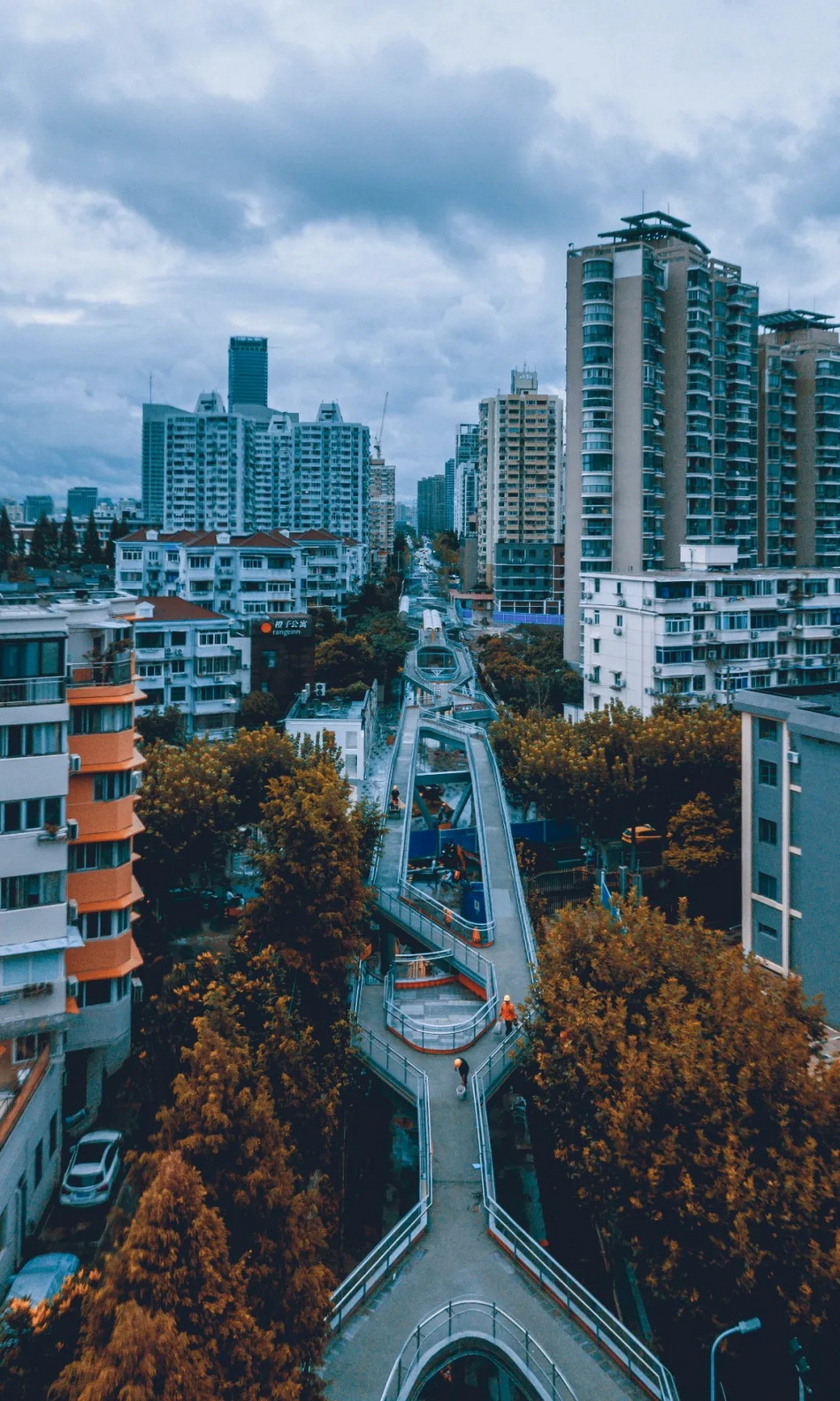
Once a freight railway branch line, this park was transformed into Shanghai's longest vegetable market by the end of 1999 after the railway was abandoned, and later evolved into a linear park.
The park is divided into three levels: the basement level is an open exhibition hall, the ground level features basketball courts and rest stations, and the top level offers staggered high-line walkways.
The 800-meter-long scenic corridor is divided into north and south wings, comprising 10 sets of scenes to meet public needs for gatherings, activities, entertainment, leisure, and sports.
Address: East side of Fengqiao Road Metro Station
Part 4: Historical culture and faith exploration
1. Yufo Temple
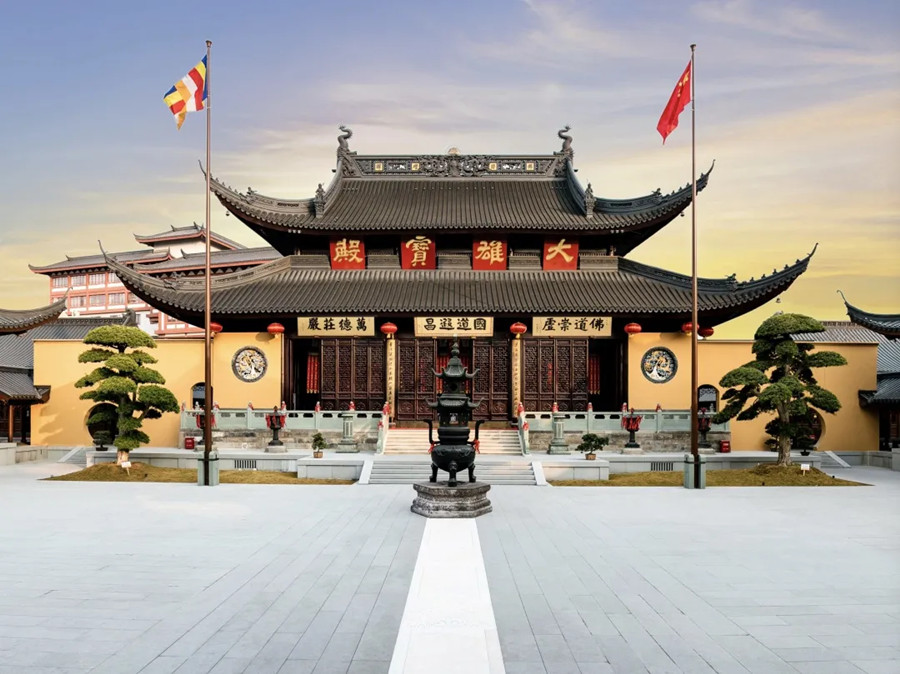
Established in 1882 and named after the jade Buddha it houses, this site is one of Shanghai's three renowned temples.
The temple's architecture follows the style of Song Dynasty (960-1279) buildings, symmetrically laid out along a central axis, exuding an ancient and solemn atmosphere.
The temple boasts a rich collection of cultural relics, including ancient stone carvings, bronze statues, and numerous works by famous calligraphers and painters from various dynasties.
Address: No 170 Anyuan Road
2. Zhenru Temple
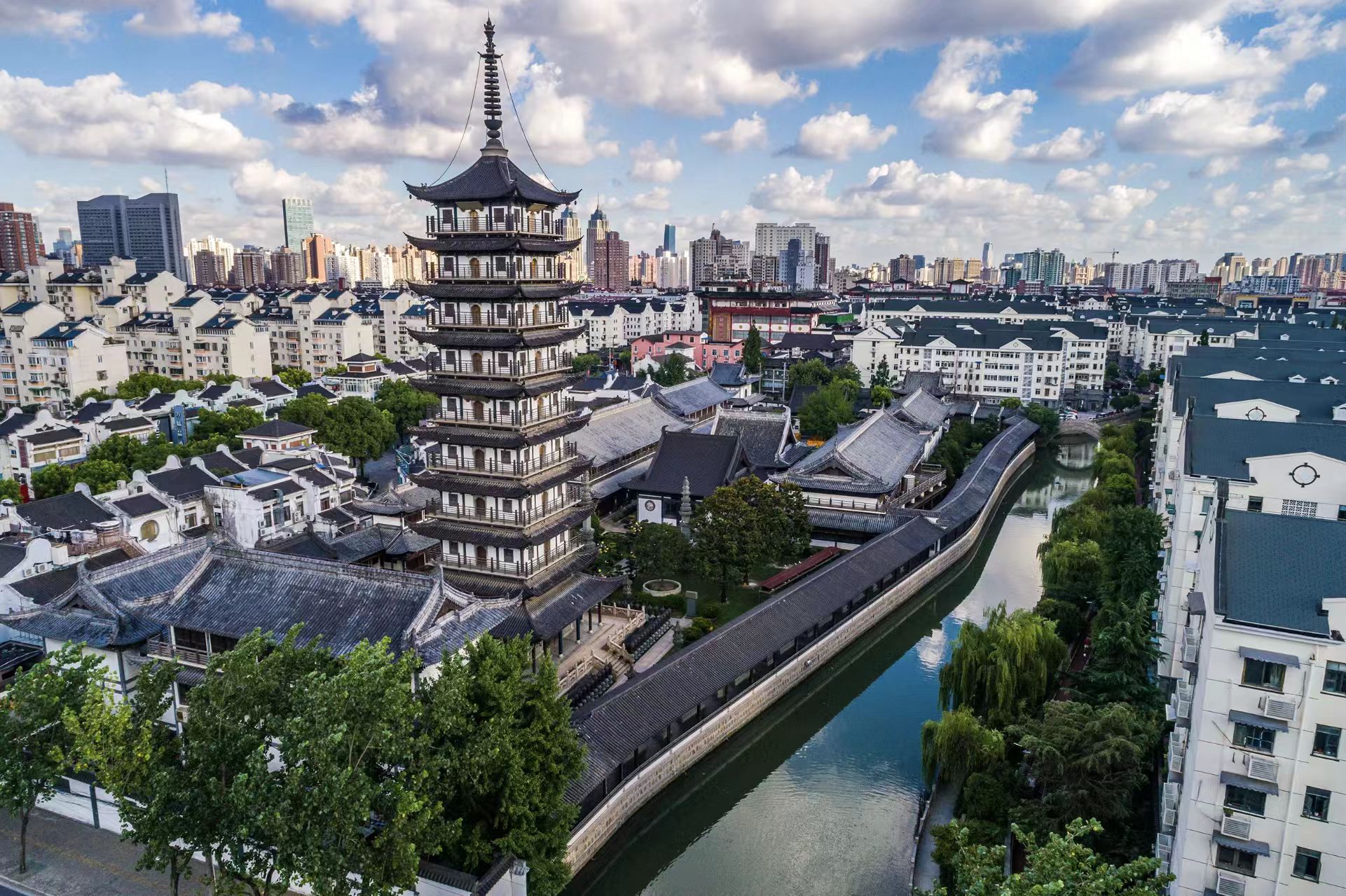
Zhenru Temple is a national key cultural relic protection unit and the only Yuan Dynasty (1271-1368) ground building in Shanghai, as well as the city's oldest wooden structure.
The Zhenru Pagoda within the temple, over 50 meters high, was built in the style of the Songjiang Fangta, a traditional wooden pagoda common in the Jiangnan region.
In front of the main hall stands an over 600-year-old ginkgo tree, believed to have been planted during the temple's founding in the Yuan Dynasty.
Address: No 399 Lanxi Road
3. Shanghai Yuan Dynasty Water Gate Museum
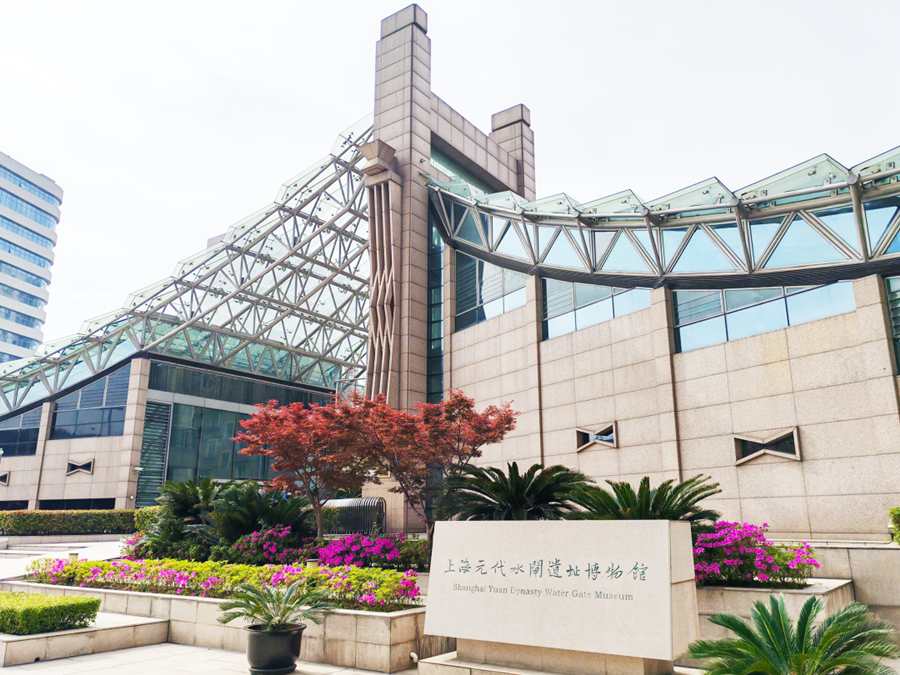
The Shanghai Yuan Dynasty Water Gate Museum is the largest, most finely crafted, and best-preserved Yuan Dynasty hydraulic engineering site in China, recognized as one of the "top 10 archaeological discoveries in China" in 2006 and a national key cultural relic protection unit.
The site, with its vast scale and exquisite craftsmanship, is rare among similar sites in China and is Shanghai's first site-type museum. The underground site, more than 7 meters deep, features over 10,000 wooden piles, showing ancient hydraulic wisdom.
The museum offers an immersive exhibition, allowing visitors to travel back 700 years and experience the ingenuity of Yuan Dynasty craftsmen.
Address: No 619 West Yanchang Road
Sources: shpt.gov.cn, Official WeChat account of Putuo district administration of culture and tourism at "shpt_wl", Official WeChat account of Shanghai Putuo district media center at "shputuo", thepaper.cn, attractions mentioned above